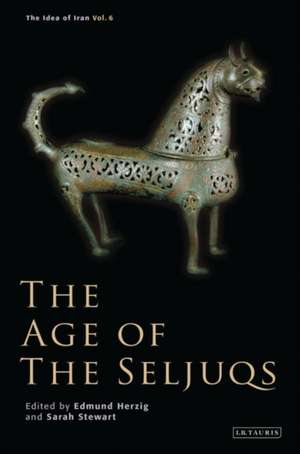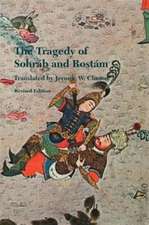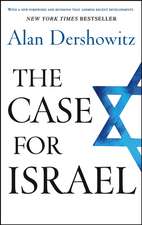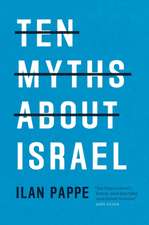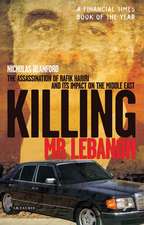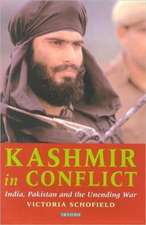The Age of the Seljuqs: The Idea of Iran
Editat de Edmund Herzig, Sarah Stewarten Limba Engleză Hardback – 19 noi 2014
NizaAZm al-Mulk is the subject of Chapter 2, in which Carole Hillenbrand subjects this 'maverick vizier' to critical scrutiny. While paying due credit to his extraordinary achievements, she does not shy away from concluding that his career illustrates the maxim that 'power corrupts and absolute power corrupts absolutely'. A fitting antagonist for NizaAZm al-Mulk is the subject of Chapter 3, in which Farhad Daftary follows the career of the remarkable revolutionary leader Hasan-i SabbaAZh and the history of the Ismaili state-within-a-state that he founded with his capture of the fortress of Alamt in 1090. In Chapter 4 David Durand-Guedy examines the Seljuq Empire from the viewpoint of its (western) capital, Isfahan. He concentrates on the distinction between the parts of Iran to the west of the great deserts (and in close connection to Iraq and Baghdad) and the parts to the east, notably Khorasan, with its ties to Transoxiana and Tokharestan.Vanessa Van Renterghem in Chapter 5 challenges the long-held view that the Seljuq takeover of Baghdad represented a liberation of the Abbasid caliphs from their burden-some subordination to the heretical Buyids.
Alexey Khismatulin in Chapter 6 presents a forensic examination of two important works of literature, casting doubt on the authorship of both the Siyar al-muluAZk attributed to NizaAZm al-Mulk and the NasAZhat al-muluAZk ascribed to al-GhazaAZlAZ. In Chapter 7 Asghar Seyed-Gohrab discusses the poetry of the Ghaznavid and Seljuq periods, demonstrating the poets' mastery of metaphor and of extended description and riddling to build suspense. The final chapter by Robert Hillenbrand shifts the focus from texts and literature to architecture and to that pre-eminent Seljuq masterpiece, the Friday Mosque of Isfaha
Preț: 377.35 lei
Preț vechi: 519.46 lei
-27% Nou
Puncte Express: 566
Preț estimativ în valută:
72.21€ • 78.68$ • 60.84£
72.21€ • 78.68$ • 60.84£
Carte tipărită la comandă
Livrare economică 23 aprilie-07 mai
Preluare comenzi: 021 569.72.76
Specificații
ISBN-13: 9781780769479
ISBN-10: 1780769474
Pagini: 200
Ilustrații: 15 bw integrated
Dimensiuni: 156 x 234 x 25 mm
Greutate: 0.52 kg
Ediția:New.
Editura: Bloomsbury Publishing
Colecția I.B.Tauris
Seria The Idea of Iran
Locul publicării:London, United Kingdom
ISBN-10: 1780769474
Pagini: 200
Ilustrații: 15 bw integrated
Dimensiuni: 156 x 234 x 25 mm
Greutate: 0.52 kg
Ediția:New.
Editura: Bloomsbury Publishing
Colecția I.B.Tauris
Seria The Idea of Iran
Locul publicării:London, United Kingdom
Cuprins
What does the history of Isfahan tell us new about the Iranian society during the Saljuq period?
Dr Durand-Guédy, Martin-Luther-Universität Halle-Wittenberg
Baghdad: a view from the edge on the Saljuq empire
Dr Vanessa Van Renterghem, Institut National des Langues et Civilisations Orientales (Inalco,Paris) & Institut Français du Proche-Orient (Ifpo, Beirut)
Ismaili-Saljuq Relations: conflict and stalemate
Dr Farhad Daftary, The Institute of Ismaili Studies & Encyclopaedia Islamica
Images into Words: metaphors as hallmarks of poetic individuality
Dr Ali-Asghar Seyed-Ghorab, Leiden Institute for Area Studies (Leiden University)
The Mirrors for Princes fabricated at the Saljuqi court: the Siyasat-name (Siyar al-muluk) by Nizam al-Mulk and the two-partite Nasihat al-muluk by al-Ghazali
Dr Alexey A Khismatulin, The Institute of Oriental Manuscripts, St Petersburg
Structures of power and influence in Seljuq Iran: the case of Nizam al-Mulk
Professor Carole Hillenbrand FBA OBE, Professor Emerita of Islamic History, University of Edinburgh
The Friday Mosque of Isfahan: the crowning achievement of Saljuq architecture?
Professor Robert Hillenbrand, Professor Emeritus of Islamic Art , University of Edinburgh
"Saljuq" Ceramics?
Professor Oliver Watson, I M Pei Professor of Islamic Art and Architecture, Khalili Research Centre, University of Oxford
Dr Durand-Guédy, Martin-Luther-Universität Halle-Wittenberg
Baghdad: a view from the edge on the Saljuq empire
Dr Vanessa Van Renterghem, Institut National des Langues et Civilisations Orientales (Inalco,Paris) & Institut Français du Proche-Orient (Ifpo, Beirut)
Ismaili-Saljuq Relations: conflict and stalemate
Dr Farhad Daftary, The Institute of Ismaili Studies & Encyclopaedia Islamica
Images into Words: metaphors as hallmarks of poetic individuality
Dr Ali-Asghar Seyed-Ghorab, Leiden Institute for Area Studies (Leiden University)
The Mirrors for Princes fabricated at the Saljuqi court: the Siyasat-name (Siyar al-muluk) by Nizam al-Mulk and the two-partite Nasihat al-muluk by al-Ghazali
Dr Alexey A Khismatulin, The Institute of Oriental Manuscripts, St Petersburg
Structures of power and influence in Seljuq Iran: the case of Nizam al-Mulk
Professor Carole Hillenbrand FBA OBE, Professor Emerita of Islamic History, University of Edinburgh
The Friday Mosque of Isfahan: the crowning achievement of Saljuq architecture?
Professor Robert Hillenbrand, Professor Emeritus of Islamic Art , University of Edinburgh
"Saljuq" Ceramics?
Professor Oliver Watson, I M Pei Professor of Islamic Art and Architecture, Khalili Research Centre, University of Oxford
Notă biografică
Edmund Herzig is Soudavar Professor of Persian Studies and a Fellow of Wadham College, University of Oxford, UK. He is the author of" Iran and the World in the Safavid Age" (I.B.Tauris). Sarah Stewart is Lecturer in Zoroastrianism at SOAS, University of London, UK. Co-editor, with Vesta Curtis and Edmund Herzig, of several volumes in The Idea of Iran series, she is also editor of" The Everlasting Flame: Zoroastrianism in History and Imagination" (all published by I.B.Tauris).
Descriere
The book further explores key topics relating to the innovative Seljuq era, including: conflicted Sunni-Shi'a relations between the Sunni Seljuq empire and Ismaili Fatimid caliphate; art, culture and ceramics; and poetry and architecture.
